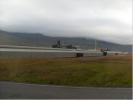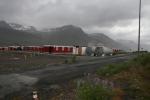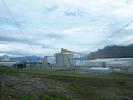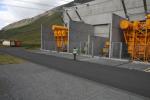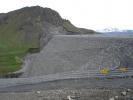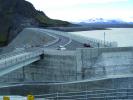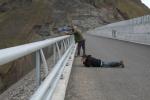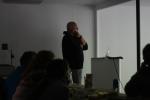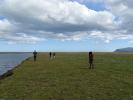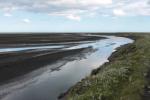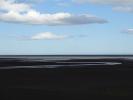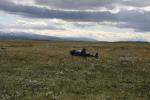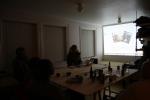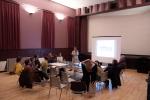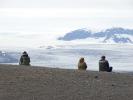Blog posts
Posts
A Hackers Manifesto, verze 4.0, kapitola 4.
By samotar, 10 January 2023
Alfred ve dvoře čili Poznámka k pražské hetero-utopii
By samotar, 10 November 2022
Trnovou korunou a tankem do srdíčka
By samotar, 2 July 2022
Hakim Bey - Informační válka
By samotar, 26 March 2022
Jean-Pierre Dupuy: Do we shape technologies, or do they shape us?
By samotar, 6 March 2022
Václav Cílek: Záhada zpívající houby
By samotar, 15 February 2022
Guy Debord - Teorie dérive
By samotar, 21 January 2022
Jack Burnham – Systémová estetika
By samotar, 19 November 2021
Poznámka pod čarou k výstavě Handa Gote: Věc, nástroj, čas, fetiš, hygiena, tabu
By samotar, 13 July 2021
Rána po ránech
By samotar, 23 May 2021
Na dohled od bronzového jezdce
By samotar, 4 March 2021
Z archivu:Mlha - ticho - temnota a bílé díry
By samotar, 7 October 2020
Zarchivu: Hůlna-kejdže
By samotar, 7 September 2020
Center for Land Use Interpretation
By samotar, 18 June 2020
Dawn Chorus Day - zvuky za svítání
By samotar, 30 April 2020
Z archivu: Bílé Břehy 2012 a Liběchov 2011
By , 3 April 2020
Z archivu: Krzysztof Wodiczko v DOXU
By samotar, 26 March 2020
GARY SNYDER: WRITERS AND THE WAR AGAINST NATURE
By samotar, 20 March 2020
Podoby domova: hnízda, nory, doupata, pavučiny, domestikace a ekologie
By samotar, 17 March 2020
Michel Serres: Transdisciplinarity as Relative Exteriority
By samotar, 5 November 2019
Pavel Ctibor: Sahat zakázáno
By samotar, 22 September 2019
Emmanuel Lévinas: HEIDEGGER, GAGARIN A MY
By samotar, 19 September 2019
Atmosférické poruchy / Atmospheric Disturbances - Ustí nad Labem
By samotar, 13 September 2019
Erkka Laininen: A Radical Vision of the Future School
By samotar, 10 August 2019
Anton Pannekoek: The Destruction of Nature (1909)
By samotar, 21 July 2019
Co padá shůry - světlo, pelyněk, oheň a šrot
By samotar, 30 December 2018
2000 slov v čase klimatických změn - manifest
By samotar, 2 November 2018
Vladimír Úlehla, sucho, geoinženýrství, endokrinologie, ekologie a Josef Charvát
By samotář, 22 September 2018
Lukáš Likavčan: Thermodynamics of Necrocracy - SUVs, entropy, and contingency management
By samotar, 20 July 2018
Tajemství spolupráce: Miloš Šejn
By samotar, 27 June 2018
Invisible Images (Your Pictures Are Looking at You) Trevor Paglen
By samotar, 2 June 2018
KŘEST KNIHY KRAJINA V POZORU: THE LANDSCAPE IN FOCUS.
By samotar, 18 May 2018
Případ zchudlé planety:Vojtěch Kotecký
By samotar, 22 April 2018
Rozhovor na Vltavě: Jak umění reaguje na dobu antropocénu?
By samotar, 10 March 2018
Skolt Sámi Path to Climate Change Resilience
By samotar, 10 December 2017
Brian Holmes: Driving the Golden Spike - The Aesthetics of Anthropocene Public Space
By samotar, 22 November 2017
Ohlédnutí/Revisited Soundworm Gathering
By samotař, 9 October 2017
Kleté krajiny
By samotar, 7 October 2017
Kinterova Jednotka a postnatura
By samotař, 15 September 2017
Ruiny-Černý trojúhelník a Koudelkův pohyb v saturnských kruzích
By samotar, 13 July 2017
Upsych316a Universal Psychiatric Church
By Samotar, 6 July 2017
Miloš Vojtěchovský: Krátká rozprava o místě z roku 1994
By milos, 31 May 2017
Za teorií poznání (radostný nekrolog), Bohuslav Blažek
By miloš vojtěchovský, 9 April 2017
On the Transmutation of Species
By miloš vojtěchovský, 27 March 2017
Gustav Metzger: Poznámky ke krizi v technologickém umění
By samotař, 2 March 2017
CYBERPOSITIVE, Sadie Plant a Nick Land
By samotař, 2 March 2017
Ivan Illich: Ticho jako obecní statek
By samotař, 18 February 2017
Dialog o primitivismu – Lawrence Jarach a John Zerzan
By samotar, 29 December 2016
Thomas Berry:Ekozoická éra
By samotař, 8 December 2016
Jason W. Moore: Name the System! Anthropocenes & the Capitalocene Alternative
By miloš vojtěchovský, 24 November 2016
Michel Serres: Revisiting The Natural Contract
By samotař, 11 November 2016
Best a Basta době uhelné
By samotař, 31 October 2016
Epifanie, krajina a poslední člověk/Epiphany, Landscape and Last Man
By Samotar, 20 October 2016
Doba kamenná - (Ein, Eisen, Wittgen, Frankenstein), doba plastová a temná mineralogie
By samotař, 4 October 2016
Hledání hlasu řeky Bíliny
By samotař, 23 September 2016
Harrisons: A MANIFESTO FOR THE 21ST CENTURY
By , 19 September 2016
T.J. Demos: Anthropocene, Capitalocene, Gynocene: The Many Names of Resistance
By , 11 September 2016
Bratrstvo
By samotař, 1 September 2016
Neptunismus a plutonismus na vyhaslé sopce Bořeň
By , 14 August 2016
Murray Bookchin: Toward an Ecological Society/ K ekologické společnosti (1974)
By samotař, 31 July 2016
Metafory, endofyzika, manželé Themersonovi a Gordon Pask
By samotař, 15 July 2016
Anima Mundi Revisited
By miloš vojtěchovský, 28 June 2016
Simon A. Levin: The Evolution of Ecology
By samotař, 21 June 2016
Anna Remešová: Je možné představit si změnu?
By samotar, 20 June 2016
Jan Hloušek: Uranové město
By samotař, 31 May 2016
Josef Šmajs: Složí lidstvo zkoušku své racionální dospělosti?
By samotař, 20 May 2016
Manifest The Dark Mountain Project
By Samotar, 3 May 2016
Pokus o popis jednoho zápasu
By samotar, 29 April 2016
Václav Cílek: Antropocén – velké zrychlení světa
By Slawomír Uher, 23 April 2016
Nothing worse or better can happen
By Ewa Jacobsson, 5 April 2016
Real Reason we Can’t Stop Global Warming: Saskia Sassen
By , 18 March 2016
The Political Economy of the Cultural Commons and the Nature of Sustainable Wealth
By samotar, 12 March 2016
Jared Diamond - Easter's End
By , 21 February 2016
Felix Guattari - Three Ecologies (part 1)
By , 19 February 2016
W. H. Auden: Journey to Iceland
By , 9 February 2016
Jussi Parikka: The Earth
By Slawomír Uher, 8 February 2016
Brian Holmes: Extradisciplinary Investigations. Towards a New Critique of Institutions
By Stanislaw, 7 February 2016
Co číhá za humny? neboli revoluce přítomnosti
By Miloš Vojtěchovský, 31 January 2016
Podivuhodný osud polárníka a malíře Julia Payera
By , 23 January 2016
Red Sky: The Eschatology of Trans
By Miloš Vojtěchovský, 19 January 2016
#AKCELERACIONISTICKÝ MANIFEST (14. května 2013)
By samotar, 7 January 2016
The Forgotten Space: Notes for a Film
By , 7 January 2016
Rise and Fall of the Herring Towns:Impacts of Climate and Human Teleconnections
By , 25 December 2015
Hlubinná, temná, světlá i povrchová ekologie světa
By , 22 December 2015
Three short movies: Baroque Duchcov, New Lakes of Mostecko and Lignite Clouds
By Michal Kindernay, 21 December 2015
Lenka Dolanová: Umění mediální ekologie
By , 21 December 2015
Towards an Anti-atlas of Borders
By , 20 December 2015
Pavel Mrkus - KINESIS, instalace Nejsvětější Salvátor
By Miloš Vojtěchovský, 6 December 2015
Tváře/Faces bez hranic/Sans Frontiers
By Miloš Vojtěchovský, 29 November 2015
Josef Šmajs: Ústava Země/A Constitution for the Earth
By Samotar, 28 November 2015
John Jordan: The Work of Art (and Activism) in the Age of the Anthropocene
By Samotar, 23 November 2015
Humoreska: kočky, koulení, hroby a špatná muška prince Josefa Saského
By Samotar, 13 November 2015
Rozhovor:Před věčným nic se katalogy nesčítají
By Samotar, 11 November 2015
Lecture by Dustin Breiting and Vít Bohal on Anthropocene
By Samotar, 8 November 2015
Antropocén a mocné žblunknutí/Anthropocene and the Mighty Plop
By Samotar, 2 November 2015
Rory Rowan:Extinction as Usual?Geo-Social Futures and Left Optimism
By Samotar, 27 October 2015
Pavel Klusák: Budoucnost smutné krajiny/The Future of a Sad Region
By ll, 19 October 2015
Na Zemi vzhůru nohama
By Alena Kotzmannová, 17 October 2015
Upside-down on Earth
By Alena Kotzmannová, 17 October 2015
Thomas Hylland Eriksen: What’s wrong with the Global North and the Global South?
By Samotar, 17 October 2015
Nýey and Borealis: Sonic Topologies by Nicolas Perret & Silvia Ploner
By Samotar, 12 October 2015
Images from Finnmark (Living Through the Landscape)
By Nicholas Norton, 12 October 2015
Bruno Latour: Love Your Monsters, Why We Must Care for Our Technologies As We Do Our Children
By John Dee, 11 October 2015
Temné objekty k obdivu: Edward Burtynsky, Mitch Epstein, Alex Maclean, Liam Young
By Samotar 10 October 2015, 10 October 2015
Czech Radio on Frontiers of Solitude
By Samotar, 10 October 2015
Beyond Time: orka, orka, orka, nečas, nečas, nečas
By Samotar, 10 October 2015
Langewiese and Newt or walking to Dlouhá louka
By Michal Kindernay, 7 October 2015
Notice in the Norwegian newspaper „Altaposten“
By Nicholas Norton, 5 October 2015
Interview with Ivar Smedstad
By Nicholas Norton, 5 October 2015
Iceland Expedition, Part 2
By Julia Martin, 4 October 2015
Closing at the Osek Monastery
By Michal Kindernay, 3 October 2015
Iceland Expedition, Part 1
By Julia Martin, 3 October 2015
Finnmarka a kopce / The Hills of Finnmark
By Vladimír Merta, 2 October 2015
Od kláštera Osek na Selesiovu výšinu, k Lomu, Libkovicům, Hrdlovce a zpět/From The Osek Cloister to Lom and back
By Samotar, 27 September 2015
Sápmelažžat Picnic and the Exploration of the Sami Lands and Culture
By Vladimir, 27 September 2015
Gardens of the Osek Monastery/Zahrady oseckého kláštera
By ll, 27 September 2015
Workshop with Radek Mikuláš/Dílna s Radkem Mikulášem
By Samotářka Dagmar, 26 September 2015
Czech Radio Interview Jan Klápště, Ivan Plicka and mayor of Horní Jiřetín Vladimír Buřt
By ll, 25 September 2015
Bořeň, zvuk a HNP/Bořeň, sound and Gross National Product
By Samotar, 25 September 2015
Já, Doly, Dolly a zemský ráj
By Samotar, 23 September 2015
Up to the Ore Mountains
By Michal, Dagmar a Helena Samotáři , 22 September 2015
Václav Cílek and the Sacred Landscape
By Samotář Michal, 22 September 2015
Picnic at the Ledvice waste pond
By Samotar, 19 September 2015
Above Jezeří Castle
By Samotar, 19 September 2015
Cancerous Land, part 3
By Tamás Sajó, 18 September 2015
Ledvice coal preparation plant
By Dominik Žižka, 18 September 2015
pod hladinou
By Dominik Žižka, 18 September 2015
Cancerous Land, part 2
By Tamás Sajó, 17 September 2015
Cancerous Land, part 1
By Tamás Sajó, 16 September 2015
Offroad trip
By Dominik Žižka, 16 September 2015
Ekologické limity a nutnost jejich prolomení
By Miloš Vojtěchovský, 16 September 2015
Lignite Clouds Sound Workshop: Days I and II
By Samotar, 15 September 2015
Recollection of Jezeří/Eisenberg Arboretum workshop
By Samotar, 14 September 2015
Walk from Mariánské Radčice
By Michal Kindernay, 12 September 2015
Mariánské Radčice and Libkovice
By Samotar, 11 September 2015
Tušimice II and The Vicarage, or the Parsonage at Mariánské Radčice
By Samotar, 10 September 2015
Most - Lake, Fish, algae bloom
By Samotar, 8 September 2015
Monday: Bílina open pit excursion
By Samotar, 7 September 2015
Duchcov II. - past and tomorrow
By Samotar, 6 September 2015
Duchcov II.
By Samotar, 6 September 2015
Arrival at Duchcov I.
By Samotar, 6 September 2015
Poznámka k havárii rypadla KU 300 (K severu 1)
By Samotar, 19 August 2015
Iceland Expedition, Part 2
Report by Julia Martin
with Finnur Arnar Arnarson, Karlotta Blöndal, Pavel Mrkus, Greg Pope, Ivar Smedstad, Diana Winklerová
(continued)
The next three days were devoted to the core question of the expedition: How to trace and reveal the complex ecologies of human-nonhuman relationships, which transform and create landscapes and cultural habits through visible and invisible processes?
Day 5: Alcoa aluminium smelter
On day five we travelled to Reyðarfjörður, a small town on the east coast where the Alcoa Fjarðaál aluminium smelter is located. A guided tour gave us a good impression of the enormous size of the factory, its production capacity, and of the company's very well functioning public relations department. Our guide also mentioned the economic risk involved in using renewable energy sources such as hydropower: In case of a power shortage, which could be due to a very long winter, resulting in low water levels in the reservoirs, and therefore low electricity production, the factory would not be fully operational. Once shut down the factory's melting pots would require a whole year to be fired up again. Unsurprisingly, the currently very low water levels of Kárahnjúkar's reservoir (the winter had been very long) were a serious cause of concern. Before driving back home, we looked at the local extensions of Alcoa’s presence in Reyðarfjörður: the newly built gigantic sports hall sponsored by Alcoa, the new highrise buildings and bungalows implanted into the fishing village, expecting Alcoa workers as new inhabitants, the abandoned work camp for the factory's construction workers which is now gradually being transported to the north of the country where a new silicon factory is going to be built.
In the evening, we held an informal artist talk in Seyðisfjörður's community house. Greg Pope and Diana Winklerová shared their work with the group and with Skaftfell's artists-in-residence.
Day 6: Kárahnjúkar Hydroelectric Project
On day six we expanded the "ecological object" of the Alcoa smelter and looked for the means upon which its operation depends: We drove into the highlands to the Kárahnjúkar dam. Along the way we saw the transmission lines connecting the smelter with Fljótsdal Power Station, we listened to the humming of their transformator station, we saw lake Lagarfljót, whose colour has changed from milky green to milky grey after the dam became operational. Once arrived at the site, we explored the gigantic structure of the dam itself, noticed the marks of wind erosion on the banks of the only partially filled reservoir, and saw the dry canyon where once a river had been flowing freely. The group was stunned by the silence of the place: no sound of flowing water, no birds, and – exceptional for the highlands – no wind on that day.
On the way back, the group experienced a bath in a hot spring up in the highlands. Drilling for this hot water in the ground provides affordable heating for most households in Iceland.
In the evening, Pavel Mrkus and Ivar Smedstad shared their work with the expedition group and with Skaftfell's artists-in-residence.
Day 7: Héraðsflói Estuary
On the next day, we looked at the two rivers that have been affected by the construction of Kárahnjúkar dam. Driving to Húsey, a remote farm in the Héraðsflói estuary, we followed Jökulsá á Dal, the dammed river that is now for most of the year fed by rainwater instead of glacial water.
Further in the south, the other river, Lagarfljót, makes its own way through the estuary. Its waters have turned greyish-brown from increased glacial sediments, because Jökulsá á Dal's glacial waters have not only been stopped by the hydroelectric project's reservoir but have also been redirected through tunnels into the powerstation and from there into Lagarfljót river. The redirection of one river into the other has caused the aquatic life and diversity in Lagarfljót to decrease dramatically.
From Húsey we walked towards the coastline as far as we could go, looking for the place at which both modified rivers flow together before entering the sea. The difference in their water colour is profound and clearly visible.
In the evening, back in Seyðisfjörður, Karlotta Blöndal and Finnur Arnar Arnarson gave an informal presentation of their work for the expedition group and Skaftfell's artists-in-residence.
Day 8: Reflection and presentation
On day eight we prepared for our public presentation of the Frontiers of Solitude project, which was held in the afternoon in Seyðisfjörður's theatre space. The organisers gave a comprehensive overview of the project's intentions and partners, and outlined the expedition program. The participating artists presented initial responses to their experiences of the encountered places and issues, and opened up a discussion with the audience. The conversation revolved around the Kárahnjúkar case, democracy, activism, local passivity as a cultural trait, the lack of a willingness to plan and make decisions, the touristic gaze, the dimensionality and relativity of local environmental issues in relation to the rest of the world, and the gap between self-perception and outside perception.
Day 9: Travel observations
On day nine we drove back to Reykjavík, stopping at the Geological Research and Heritage Center Breiðdalssetur, where we visited the exhibition "Parallel Line Up" and spoke to the artist Jenny Brockmann and to the center's director Christa Maria Feucht about their individual approaches to fieldwork. Jenny Brockmann's artistic practice links geology and weather, and during her research in Iceland she has been able to explore and appropriate various techniques of measuring and recording, as used in geological field expeditions.
The rest of the day and evening saw us travelling along the south coast of Iceland, stopping briefly at the famous glacial lagoon Jökulsárlón, where the topic of the touristic gaze came up once again with force.
Day 9: Art and activism
In Reykjavík we had a meeting with author and activist Andri Snær Magnason at Toppstöðin, a former power plant which has been transformed into a center for cultural entrepreneurs, activists, and artists. With Andri we spoke about the writing strategies for his book and movie Draumalandið, the development of his writing practice as a whole, how to sustain an investment in activism, and about the latest developments in Iceland's energy policy. We also discussed poetry as a political agent and as a method to bring disparate elements of a complex system into direct contact and context with each other – for example linking, through poetic association, the political, psychological, and socioeconomic aspects of the Kárahnjúkar project.
In the afternoon we visited the National Gallery and spoke to the director of the Woody Vasulka Chamber research and archiving project. The day – and the expedition – ended with a fabulous dinner at Finnur Arnar Arnarson's house in downtown Reykjavík.
Day 10: Departure day for all
Pavel Mrkus
The Fall
The cosmic gravitational force pulls all matter toward the center of the Earth. Water from above searches for cracks and openings in the top layers of hard rock, and flows through crevasses over the surface. The energy of falling water is constant, independent of time, the environment, aesthetics, or human-oriented time scales that contain an individual life. Gravity’s proof is the existence of cosmic mechanisms as an elemental power that holds everything together, a concentrational force with the precise equilibrium of clockwork. An adequate supply of falling matter - in this case water - is the only variable in the calculations of the power generated, and quickly changing conditions for the existence of life. The energy of collapse is a paradox.
The artwork “The Fall” brings an explicit model of confrontation to hydro power in its raw and abstract form. The work will consist of multi-channel video installations assembled from footage taken during an expedition in Iceland. The images will pass through post-production that involves an animated time-lapse effect and exposure correction. Another part of the installation will consist of the multi-channel sound that comes from these takes, but which is modulated according to the speed of each channel. The installation will be adapted to LCD monitors arranged in a concentrated space. Other spaces might find it ideal to present it as a set of multiscreen large-scale projections with distinctive multichannel sound in a separate darkened room.
Pavel Mrkus, October 2015
Pavel Mrkus MgA, Doc. (b 1970, Mělník) is an audiovisual artist who makes use of digital moving images and sound often in relation to specific space. He graduated from the Academy of Arts, Architecture and Design in Prague. His interest in Religious Studies together with experience of four years teaching position at Toyama City Institute of Glass Art in Japan lead him to unique mixture of cultural paradigms within his work. After showing at 50th Venice Biennial in 2003 he participated in many group and solo shows around world. Together with Daniel Hanzlik they established Time-Based Media studio at Faculty of Art and Design at J. E. Purkyne University in Usti nad Labem. He was awarded a Personality of the Year 2012 for his exhibition Next Planet in The Brno House of Arts.
"With a non-conflictual stubbornness, the artist seeks out and applies elements of cyberspace spirituality to artistic projects. He subconsciously compares this spirituality to the principles of transcendence in the analog world. Similar to how Eastern religious systems have become the philosophical point of reference for the work of the early Conceptualists, in many ways they represent, permeated as they are with traditional Christian spirituality, a landing point for the cosmic odyssey of this Czech artist." (Michal Koleček)
…
Diana Winklerová
Only in fragments are we able to perceive the world around us. Our senses head towards a fraction of reality, which is above that filtered by the urge of the mind. If we were to see all the aspects interrelated, as a human kind we would most probably interact with our surroundings in a very different way. Based on experience of the expedition in Iceland, in the presented artwork I am trying to touch questions of fragmentary perception of the environment. How large is the footprint that we leave behind and how large impression does the environment leave in us? Is there a relationship between the amazement by the beauty or sublime of the perceived and responsibility for these phenomena? The collection of presented artworks depicts fragmentary impressions of the natural environment in relation to different mental frameworks.
Only in Fragments
The Frontiers of Solitude project touches in a variety of ways upon my previous artistic production, personal thoughts and contemplation. For the exhibition in February, I am preparing a collection of works influenced both by the inspiring environment of my expedition to Iceland, as well as other deeper connections to the Frontiers of Solitude project. I am loosely extrapolating my previous artistic expression, as well as the frontiers of my own visual practice.
Since the beginning of the project, the topic “frontiers of solitude” has been present throughout, and subsequently has become an essential motto of self-inquiry and for my art. It is directly connected to the perceived environment of Iceland, and indirectly, it is found deep within my thoughts, both before and after.
The collection of artworks deals with the influence of audio-visual recordings that become subtle objects. The potential tactility of an object and the necessity of the viewer’s movement in relation to it are, in my view, relevant senses that can lead the viewer toward a feeling of active presence. I understand the influence of direct practice on the intensity and depth of perception. That is why I try to create a new reality from actual or imaginary documentation. However, my aim is not to monumentalise a communicated message. It is rather its fuzziness, its indefinite qualities, and its uneasy urgency. Visually, I relate to natural forms and, in general, I try to connect them to the human experience.
The subject of ecology that pervades the project is connected to the perception of the landscape and the realisation of a personal attitude where I, as a human being, enter a space that has been affected by my own kind. The footprint of human activity in a landscape has its own communicative value, which stimulates the possibility of sharing personal feelings by means of creating a message in visual terms. Transmitting the message into the new spatial frame of either a gallery or a picture in a catalogue (and the like) creates a new experience filtered by my personal relation to the object originally perceived. I am not able to give the viewer my full experience. I rather pick and choose, focusing on individual perceptions, which I put into new relations. In addition, I also search for balance between the possible understanding of myself and the viewer. Focusing on detail results in closeness; the possibility of entering into the situation. Namely, I introduce recordings of deeper perceptions in my works that have had a certain emotional impact on me that is worth sharing.
The concept of ecology can also, in my view, become a criterion for a temporary perception, particularly involving the movement of humans, sounds or visuals on screen that may become a momentous features that influence one’s feelings. I observe the blurred borderline between detachment and belonging, as well as the connection of these terms to the perception of solitude. In parallel with the contemplation of the impact of tourism on the environment, I wish to raise the awareness of the viewer so that he becomes more than a mere beholder, using a creative approach that may merge him with the perceived, as if to uncover the mask of the visitor, so he may realise himself as having a part in the situation.
Diana WInklerová, Prague October 2015
Diana Winklerová (b. 1983) is a sculptor and musician living and working in Prague. She graduated from the Academy of Applied Arts in Prague from the sculpture studio under the guidance of prof. Kurt Gebauer. She actively participates in the cultural scene of both visual arts and music, teaching modeling at the Academy of Applied Arts in Prague. In her installations she uses different types of media whose implementations mostly take the form of sculpture, objects, digital photos, video or computer manipulations.
…
Field Work and Ecology
This expedition through Iceland will lead participants to various locations in the South, East and North of Iceland where the untapped sources of renewable energy – water, steam, and wind – as well as the impacts of hydro- and geothermal power plants on the landscape and on local micro-economies, can be observed.
We will visit the largest rockfill dam in Europe, Kárahnjúkar dam, as well as the aluminium factory for which it was built, and the affected river systems. The construction of Kárahnjúkar dam (2003-07), and the political process leading up to it, have been the subject of extreme controversy in Iceland. Under the current government, plans for more hydroelectric mega-dams are under way. They promote an intensified “harvesting” of the country’s large number of free-running rivers and promise cheap "green" energy – with the aim of attracting investors, multinational corporations, and energy-hungry heavy industry to Iceland.
Participating artists will meet with experts from other disciplines and will be introduced to the ecological, political and socioeconomic aspects of the sites visited. The program intends to feed into a critical and informed debate about case-specific ecological and socioeconomic co-dependencies, and about the means and ends of renewable energy production and energy consumption.
Program
10. Aug: Arrival of artists in Reykjavík/Keflavík Airport
Travel by car to Akureyri
11. Aug: Travel along the north coast to Lake Myvatn, geothermal landscapes of Krafla, through the northeast to Dettifoss nad waterfalls Egilsstadir
12 Aug: Afternoon meeting at Skaftfell Center for Visual Art, talk by Markús Þór Andrésson
13 Aug: Visit to Skálanes Nature and Heritage Centre, Seyðisfjörður
14 Aug: Site visit to Reydarfjördur, tour to Alcoa Aluminium Smelter
15 Aug: Site visit to Kárahnjúkar hydroelectric dam in Eastern Highlands
16 Aug: Site visit to Lake Lagarfljót and Heradsflói Estuary
17 Aug: Return to Seyðisfjörður, evening meeting at Skaftfell Project Space, sharing of visual material, observations, thoughts, open to the public
18 Aug: Travel along south coast to Reykjavík, (Jökulsárlón Ice Lagoon, glacial estuaries, geothermal greenhouses Hveragerði
Accommodation at SÍM (Association of Icelandic Artists)
19 Aug: talk by Andri Snær Magnason, and evening screening of "Dreamland" movie, based on his book Dreamland, discussion on the planned projects and impressions of the participants
20 Aug Departure day from Reykjavik
Participants: Pavel Mrkus, Diana Winklerová, Greg Pope, Ivar Smedstad, Karlotta Blöndal, Finnur Arnar Arnason
Organisation: Julia Martin, Tinna Guðmundsdóttir
Documentation: Lisa Paland
…
Skaftfell
Skaftfell Center for Visual Art, located in Seyðisfjörður, plays the essential role of presenting, discoursing and encouraging the development of contemporary art in eastern Iceland. It is a meeting point for artists and locals, and its activities are based on exhibitions and events, alongside an international residency program and outreach program.
Skaftfell is also the guardian of a minuscule house previously owned by the local naïve artist Ásgeir Emilsson.
In March 2013 Skaftfell received an Icelandic award, Eyrarrósin, for outstanding cultural leadership in a rural area.
Skaftfell - Myndlistarmiðstöð Austurlands
Center for Visual Art in East Iceland
Austurvegur 42
710 Seyðisfjörður, Iceland
(+354) 472 1632
skaftfell@skaftfell.is
Forstöðumaður/Director
Local Project Manager
Tinna Guðmundsdóttir
skaftfell@skaftfell.is
Local Project Curator
Julia Martin
julamir@hotmail.com
Documentarist
Lisa Paland
lisa.paland@gmx.de
skaftfell.is/en/skaftfell
…
Julia Martin
The Iceland expedition: Tracing hyperextended objects and their ecological agency.
Hyperextension is a medical term describing the extension of a body part beyond its normal limits. I have coined the term “hyperextended objects” in order to describe objects whose ecological agency extends them into the range of other objects, connecting them to many other objects, forces, beings, ecologies, in specific means-and-ends relationships. Regarding objects not as closed but as hyperextended allows us to understand them as ecological agents participating in forming ecological systems of objects and infrastructures, both man-made and natural. To discover their joint ecological agency, objects must be hyperextended beyond their individual object-hood through contextual research. The aim of the expedition in Iceland was to introduce the artists to this concept, and to let them trace hyperextended objects in the field context, thereby discovering their wider ecological agency. We used the Kárahnjúkar hydroelectric project in East Iceland as a case study, following the extensions of the entire project: The hydroelectric dam, the powerstation, the powerlines, the aluminium smelter for whose energy supply the dam was built, the neighbouring towns, and the two affected river systems. All these components together form a hyperextended object of concern – whose wider ecological agency may even defeat the initiating object's "green" intention (e.g. producing hydroelectricity while destroying aquatic systems, in order to build parts for airplanes). It is hoped that recognizing and visualizing hyperextended objects in advance can lead to changes in decision-making regarding land use and environmental planning.
Julia Martin (b. 1976, Berlin) is an artist and landscape architect from Berlin, living in Seyðisfjörður, Iceland. She holds a Ph.D. in art from Goldsmiths, University of London, an M.F.A. from Edinburgh College of Art, and an M.A. in landscape architecture from the Technical University Berlin. Her performative actions, drawings, photocollages, installations, and writings investigate the relationships between objects and agents in space and time, and have recently focused on developing her concept of hyperextended ecological objects.
Julia's recent research project is Kárahnjúkar–Reyðarfjörður–Heraðsflói (2011– ongoing), about which she says: This ongoing fieldwork-led research in East Iceland investigates the ecological and socioeconomic relationships and contingencies of three expansive objects and sites: the Kárahnjúkar hydroelectric dam, the Alcoa aluminium smelter in Reyðarfjörður, for which the dam was built, and the Heraðsflói estuary where the two affected rivers meet before they flow into the sea. The project looks especially at the infrastructural, political, and spatial connections between these places and at their intervowen transformation due to human intervention. Tracing and visualising their means-and-ends-relationships, the case study reveals a hyperextended object: a complex ecology incorporating without clear separation natural processes, human activities, and their residues.
…
Greg Pope: Lagoon
Lagoon audiovisual performance 20 min
A simple series of repeated actions build the sonic and visual imagery in a live performance utilizing an adapted slide projector, contact mics, guitar pick-up and modified shutter system. The performance brings together ‘pure’ images of the Jökulsárlón lagoon in Iceland with the raw intervention of live, inscribed, drawing with light. An idealized and untouched view of nature is gradually invaded by crude abrasions and real time intervention – what at first begins as a touristic take on an iconic landscape ends as a brutalist lesson in creation through destruction.
STONE HORIZON
Stone Horizon is the result of the Frontiers of Solitude expedition to Iceland. This will be a projector performance made in collaboration with Veronika Vlková (CZ) and Kateřina Koutná (CZ). The performance will take place at Stavanger ScreenCity Festival (October 2015) and PAF, the Ffestival of Film Animation (December 2015), in Olomouc, Czech Republic.
A structured 40-minute live cinema event will be created from 35mm photographic material gathered during our tour of Iceland. The event will be divided into three parts: Stone Horizon, Liquid Stone, and Hard Currency.
For this performance, we will be using three slide projectors using a speed-controlled shutter apparatus to create a proto-cinema, moving image performance. The projected image will be juxtaposed with action and sounds by means of acoustic and electronic instruments, played by Vlkova and Koutná. This piece will not directly address issues of ecology, land (mis)use and corrupt politics, etc., but these issues will be embedded in our approach and the presentation of Stone Horizon. The event will portray an abstracted notion of Iceland, although the country itself will never be mentioned, rather it will hopefully convey a general feeling about a spectacular land and its alterations through human intervention.
The piece is being devised and workshopped in Czech Republic over three days at the end of September, so it is still very much in development, and the final form is not yet known. Apart from Stone Horizon, I intend to use some of the material to create a series of connected images, hand printed photographs taken of the Kárahnjúkar hydroelectric dam. This is a project to be developed during the winter, after the December festival in Olomouc.
Greg Pope 22.9.15
Greg Pope is a British media artist and filmmaker who currently lives in Norway. After dabbling in punk rock bands and absurdist performance, Pope founded the Brighton-based super-8 film collective Situation Cinema in 1986, and afterwards, Loophole Cinema (London, 1989).
Using 16mm, super-8 and video, Loophole Cinema were self-styled shadow engineers performing numerous events around Europe. They produced The International Symposium of Shadows in London in 1996.
Working collaboratively and individually, Pope has created video installations, live art pieces and single screen film works since 1996. Recent works include live cinema performance pieces Light Trap and Cipher Screen, as well as the 35mm film productions Shadow Trap and Shot Film. He is active teaching, projecting, programming and making film.
…
Ivar Smedstad
Marble Warble is an audiovisual work recorded in one take at the grave of Maria Georgsson, born Wathne (1.3.1885 - 28.12.1912), in Seyðisfjörður, Iceland. The marble structure overgrown with moss has the feel of an ice landscape through the macro recording. Through restructuring of the real time recording and juxtaposing of sounds and images related to thermic energy the piece creates a pastiche of image and sound. The different layers of warbling sound affects separate sections of the image, thus suggesting a dissection to expose an inner nerve.
Ivar Smedstad (b.1961, Oslo) studied fine arts at the San Francisco Art Institute and received his degree in performance/video in 1988. He then moved on to work with distribution and preservation of video art at Electronic Arts Intermix in New York, where he held the position as Technical Director.
In 1992 he received a fellowship from the Academy of Media Arts in Cologne where he worked as an artist in residence and lecturer in media art.Since year 2000 Smedstad was associate professor in the Intermedia department and institute chair at Trondheim Academy of Fine Arts.
Smedstad is currently director of Atelier Nord, a media arts organization in Oslo. Ivar Smedstad has been working with video art and electronic media since the early 1980s and has participated in numerous international and national video art exhibitions, screenings and festivals.
…
Karlotta J. Blöndal
Frontiers of Solitude (union/mediation)
Frontiers of Solitude (mediation) consists of a short video loop displayed on a smart phone through social media. It is individually presented to the visitor by the artist herself, or by a gallery worker. The work invites reflection on the multiple layers of communication explored and utilized in the Frontiers of Solitude project: Communication between the presenter and the perceiver of a work of art, between humans and nonhuman forces such as geothermal steam vents or the energies that create and transform landscapes, and the communication technology employed by individuals and society to mediate experiences and productive outcomes with instant accessibility, enabling their quick and easy consumption.
Frontiers of Solitude (union) is a table flag whose fabric has been replaced with aquarelle painting on paper. It can be regarded as the flag of the Frontiers project, and also as a kind of non-flag, whose colors and lines resemble biological residue, organisms, or even skin tones. It might
express the very vulnerable, conflicted, but influential position, and the self-positioning of humankind within nature.
Karlotta J. Blöndal (b. 1973) works in a variety of media, including drawings, paintings, publications, installations and performances. Her work often uses found documents, exploring the tension between presentation, re-presentation and value in the art object. Blöndal studied at the Icelandic College of Art and Crafts and holds an M.A. from Malmö Art Academy. She has been involved in artist-run initiatives such as the Living Art Museum in Reykjavik and Signal Gallery in Malmö, and was co-editor and publisher of the Icelandic art magazine Sjonauki.
…
Lisa Paland
Lisa Paland (b. 1989) studied cultural and media education in Merseburg, Germany with main focus on digital and analogue photography. She finished her B.A. in 2014 with a final work about the remains of open cast mining in eastern Germany using instant film. She is currently working as an intern at Skaftfell - Center for Visual Arts in Seyðisfjörður and will document the Frontiers of Solitude expedition in Iceland.
…
Finnur Arnar Arnarson: Ignorant and Happy
About liking and disliking at the same time.
About being schizophrenic, ignorant and happy.
I love toasted bread.
I hate power plants.
I love driving in the highland.
I hate destroying pure nature.
I love Coke.
I hate aluminium plants.
I love watching Formula 1.
I hate pollution.
I love greenhouses.
I hate the greenhouse effect.
I love economic growth.
I hate large enterprises.
I love my new computer.
I hate mining.
I love Christmas lights.
I hate electric lines.
I love travelling abroad.
I hate too much tourism.
I love myself.
I hate myself.
Finnur Arnar Arnarson (b. 1965) works with video, text, and installation, finding his inspiration in familiar reality. Themes in his work include alienation from the environment, the objective and subjective experiences of time and space, and technology as an extension of human will and determination.
Arnarson studied sculpture and mixed media at the Icelandic College of Art and Crafts. He has worked as a stage and set designer at the Iceland Drama School, and has taught at the Iceland Academy of the Arts.
…

